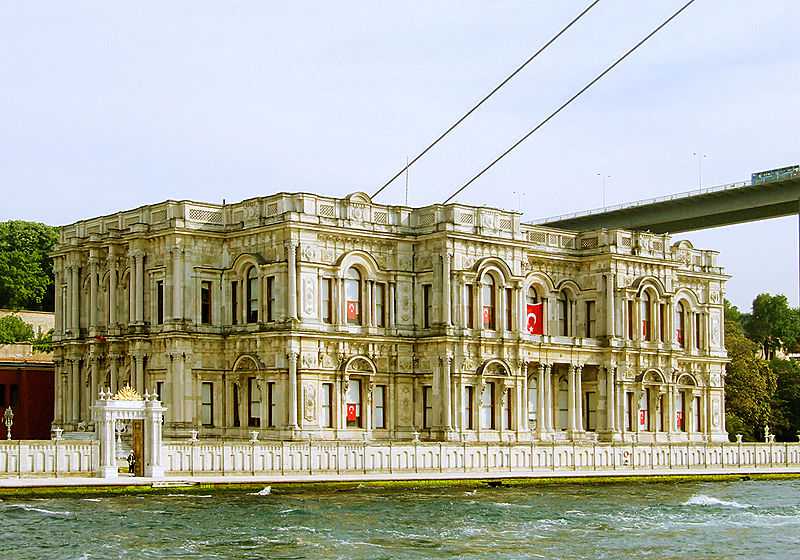Istanbul – One of the most worn-out cliches about Istanbul is that the city straddles two continents. Most tourists stay in only one of them for the entire duration of their trip and it’s usually the European part.

Only a few venture to the Asian side although there are many pearls from the Ottoman era to be found in the shadow of modern Istanbul, such as Beylerbeyi Sarayi, one of the lesser-known sultan’s palaces.
The best way to reach these Turkish delights is by crossing the shimmering Bosporus river. The boat moors at a quay below wooded slopes. Pastel-coloured tower blocks stand among the trees.
Beylerbey is an upmarket district of town which owes its name to the sultan’s extravagant home on the banks. After all, Topkapi and Dolmabahce are not the only palaces in Istanbul worth visiting
‘The further north you go from here the more expensive it gets,’ said tourist guide Oktay Ozserbetci. Captains of industry and construction magnates have settled here along with intellectuals, artists and old, established Istanbul families who reside in the lavishly-restored wooden dwellings which date back to the Osmanic era.
The sultans were partial to the fresh breezes hereabouts and the magnificent views over the Bosphorus. They used to spend the summer at Beylerbeyi Palace, strolling along the gravel paths between white lanterns and neatly-clipped bushes.
This place is still a refuge in bustling Istanbul even though the palace now lies in the shadow of a suspension bridge which spans the Bosphorus over a length of 1,074 metres. Traffic roars over it at the lofty height of 64 metres above the water.
The sultans liked to take a cup of coffee at one of the little kiosks along the bank. The booths are known as Kusluk which means birdhouse in Turkish. Handsomely-decorated portals front the many jetties and these are a popular backdrop for tourists, newly-married couples and those here on a day’s excursion.
Sultan Abdulaziz was a giant of a man who ordered the summer palace to be erected here on the site of a palatial wooden construction.
The building work took four years, finishing in 1865. The new building had no heating or cooking facilities and meals were delivered from elsewhere.
What it lacked in creature comforts however was made up for by a degree of munificence which the last Osmanic sultan was reluctant to forego.
Oktay Ozserbetci leads visitors past the gold-plated, coffered ceilings and huge mirrors into a large chamber. The centre of the room is dominated by a group of Empire furniture arranged around a marble table. On it stands a blue vase.
‘This was the admiral’s waiting room,’ explains Oktay. He describes the interior as a blend of baroque and rococo in the Osmanic style. A massive marble basin filled with water was on hand to ensure to ensure a pleasant room temperature.
Oktay carries on to the dining room. ‘The cedarwood chairs are upholstered with gazelle leather,’ he says. The bedroom with the sultan’s short, wide bed and intricately-carved paravent gives off the air of a fragile doll’s house.
After the Young Turks staged a putsch in 1912 Sultan Abdulhamid II lived here until his death in 1918.
The first floor is reached via a wide, wooden staircase. This was the preserve of the ‘harem mothers.’ The Blue Room reveals the true magnificence of the old Osmanic dynasty.
The Japanese and Chinese porcelain vases date back to between the 11th and 13th centuries, the chandeliers are of Bohemian crystal and the double-edged carpet spreads over more than 140 square metres. The panegyric inscriptions on the ceiling are in golden Arabic letters.
‘The most beautiful room is here,’ calls Oktay, leading his guests into the VIP box, a cabinet lined in dark wood without a single nailhead to be seen. The room is completely sound-proofed and was used by the sultans to consult with visitors without the usual interpreters present.
No amount of diplomacy was able to stave off the collapse of the Ottoman Empire and one of the reasons why it could not last is enshrined in this very building, explains Oktay.
via Visiting the sultan’s palace in Istanbul – Monsters and Critics.

Leave a Reply